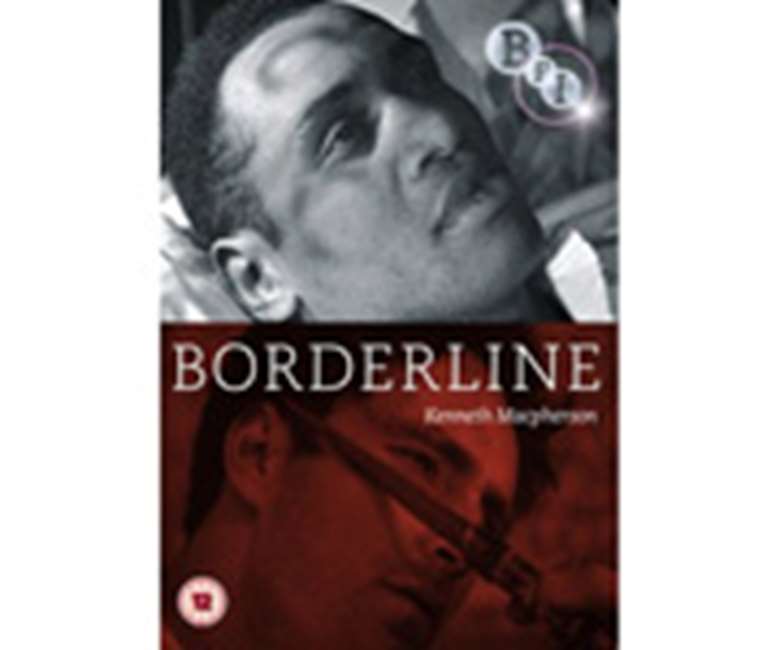Borderline - Silent taboos
Friday, July 27, 2007
Courtney Pine provides the score for a newly revived version of the silent movie Borderline starring Paul Robeson and directed by Kenneth MacPherson. Selwyn Harris is impressed.

The challenge of making music to accompany a silent film has a seductive appeal for jazz musicians. The opportunities in cinema today for putting wall-to-wall jazz on the screen, with an option to improvise, just don’t exist for the jazz musician cum budding film composer. Louis Sclavis, Wycliffe Gordon and Don Byron are a few of the jazz musicians of note in recent times that have created original scores for films from the 1920-30s silent era. These films, after all, would have originally been accompanied by a piano, a Wurltzer, even a jazz band that would have more than likely banged out a literal-minded musical interpretation. But the Silent films that have over time become to be regarded as avant-garde have much more to offer score composers than at first perceived. In 1999 the band Cinematic Orchestra lived up to its name with a Portuguese Film Festival commissioned score for Russian director Dziga Vertov’s pioneering documentary Man with a Movie Camera (1929). It’s a propaganda film that portrays an industrial utopia, and Cinematic Orchestra’s lazy, hypnotic loops perfectly shadow Vertov’s portrayal of the idealisation of man’s relationship with technology.
However, the film is primarily innovative for the way it manipulates the moving image in order to express meaning. Released a year later another truly cutting-edge silent Borderline (1930) by the Scottish filmmaker Kenneth MacPherson does something similar but with a markedly different approach. This seminal independent British silent film has just been released on DVD with a fantastic contemporary score supplied by Courtney Pine. McPherson was the founder editor of the influential film journal Close Up, at the time known as “the only magazine devoted to film as an art”. Rejecting dominant cinema that took its cue from the world of theatre and literature, the Pool group as it was known – boasting members of the intelligentsia, artists, performers and poets – turned their attention to something called “psychological realism”. It was an aesthetic that borrowed directly from GW Pabst and the “montage” cinema of Sergei Eisenstein. Released around the time that Silents were on the verge of extinction and about to be usurped by talkies, Borderline demonstrates how the expressive potential of cinema benefited as a result of – rather than in spite of – the lack of sound.
But it’s rather the film’s daring approach to sexuality and race that sets Borderline apart as a seminal piece of British cinema. As its title suggests, it toys artfully with the racial, sexual and cultural boundaries of the period. Among the ideas occupying the Pool group would have been the emergence of New York’s Harlem renaissance. Occurring alongside the widespread influence of Freud in the 1920s were cultural changes to Afro-American culture, and the then liberating notion among whites that Black Americans were more than just work fodder. Afro-American singer/actor Paul Robeson’s role in the film is significant in this respect. As a symbol and activist of the renaissance, Robeson is the only professional actor in the film and his desire to connect to a like-minded set of individual in Europe allegedly led him to play the role of Pete for no fee.
The film centres on an interracial love triangle. The main narrative is concerned with racism and is illustrated admirably without any attempt to take a moral standpoint. The story revolves around a guesthouse run by a set of liberal, hedonistic young people sympathetic to the emerging black American culture. In what would have been completely frowned upon at the time, the manageress played by Bryher has given a room to Pete (Paul Robeson) and his light-skinned black wife Adah, played by Robeson’s real wife at the time Eslanda Robeson. Adah though is having an affair with a white man Thorne (Gavin Arthur), who is also involved with Astrid (played by the poet Hilda Doolittle aka HD). When Adah leaves Thorne to be with her husband Pete, Thorne is distraught and race becomes an issue. Increasingly Pete becomes the scapegoat for the heartache and conflict that follows between Thorne and Adah. When Thorne “accidentally” murders Astrid, the “liberal” Guest House is forced by the authorities to kick Pete out: “That’s what we’re like,” admits the sympathetic Manageress resignedly. To an extent, Robeson’s character could be seen as reductionist in terms of identity as he tends to be photographed in natural surroundings: sometimes with clouds and the sea as backdrops – the location set in a Swiss Alps border town is important in this respect. Likewise Pete’s behaviour is stoical even in the most threatening situations.
Yet on the other hand this portrays the reality of culture in this period, and besides Pete also is the character that comes out of the situation with the most dignity.